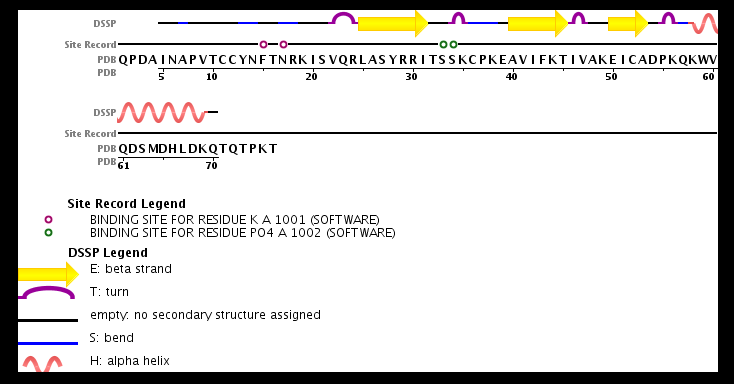Sandbox Reserved 1134
From Proteopedia
(Difference between revisions)
| Line 19: | Line 19: | ||
== Action principle == | == Action principle == | ||
| - | MCP1 is secreted thanks to variety of cells including endothelial cells, fibroblasts, epithelial, and smooth muscle. It acts by attracting some of the immune cells like monocytes and lymphocytes. | + | MCP1 is secreted thanks to variety of cells including endothelial cells, fibroblasts, epithelial, and smooth muscle. It acts by attracting some of the immune cells like monocytes and lymphocytes. These cells are equipped with a CCR2 receptor coupled with a G protein that can recuits MCP1. |
| - | MCP1 apply its chemotaxis power thanks to a concentration gradient : immune cells move from region with low concentration of MCP1 to region where a lot of MCP1 is secreted. Monocytes will then themselves be matured in | + | MCP1 apply its chemotaxis power thanks to a concentration gradient : immune cells move from region with low concentration of MCP1 to region where a lot of MCP1 is secreted. Monocytes will then themselves be matured in macrophages that are able to secrete MCP1 in order to recruit more immune cells on the damage tissue. |
== Ligands == | == Ligands == | ||
| Line 52: | Line 52: | ||
== Synthesis == | == Synthesis == | ||
| - | Thanks to a combination of solid phase peptide synthesis (SPPS) and native chemical ligation (NCL), MCP1 was synthesized. Its thioester-peptide segment was made using the sulfonamide safety-catch linker and 9-fluorenylmethoxycarbonyl (Fmoc) SPPS and that is probably one of the first crystal structures prepared using these techniques. To facilitate the synthesis of both MCP1 fragments, pseudoproline dipeptides were used. Then, NCL was used to assembly the all chain and MCP1 was folded and oxidized by a glutathione redox buffer. | + | Thanks to a combination of solid phase peptide synthesis (SPPS) and native chemical ligation (NCL), MCP1 was synthesized. Its thioester-peptide segment was made by using the sulfonamide safety-catch linker and 9-fluorenylmethoxycarbonyl (Fmoc) SPPS and that is probably one of the first crystal structures prepared using these techniques. To facilitate the synthesis of both MCP1 fragments, pseudoproline dipeptides were used. Then, NCL was used to assembly the all chain and MCP1 was folded and oxidized by a glutathione redox buffer. |
MCP1 was crystallized and the structure was determined by X-ray diffraction at 1.9-A resolution. | MCP1 was crystallized and the structure was determined by X-ray diffraction at 1.9-A resolution. | ||
Current revision
| This Sandbox is Reserved from 15/12/2015, through 15/06/2016 for use in the course "Structural Biology" taught by Bruno Kieffer at the University of Strasbourg, ESBS. This reservation includes Sandbox Reserved 1120 through Sandbox Reserved 1159. |
To get started:
More help: Help:Editing |
| |||||||||||
References
https://fr.wikipedia.org/wiki/CCL2 http://www.ebi.ac.uk/thornton-srv/databases/cgi-bin/pdbsum/GetPage.pl?pdbcode=1DOK http://www.uniprot.org/uniprot/P13500#interaction http://www.rcsb.org/pdb/explore/explore.do?structureId=3IFD
- ↑ Carr MW, Roth SJ, Luther E, Rose SS, Springer TA. Monocyte chemoattractant protein 1 acts as a T-lymphocyte chemoattractant. Proc Natl Acad Sci U S A. 1994 Apr 26;91(9):3652-6. PMID:8170963
- ↑ Ito Y, Ishiguro H, Kobayashi N, Hasumi H, Watanabe M, Yao M, Uemura H. Adipocyte-derived monocyte chemotactic protein-1 (MCP-1) promotes prostate cancer progression through the induction of MMP-2 activity. Prostate. 2015 Jul 1;75(10):1009-19. doi: 10.1002/pros.22972. Epub 2015 Apr 27. PMID:25917126 doi:http://dx.doi.org/10.1002/pros.22972
- ↑ Lubkowski J, Bujacz G, Boque L, Domaille PJ, Handel TM, Wlodawer A. The structure of MCP-1 in two crystal forms provides a rare example of variable quaternary interactions. Nat Struct Biol. 1997 Jan;4(1):64-9. PMID:8989326


